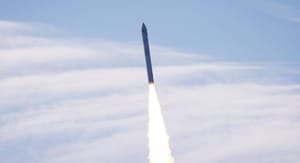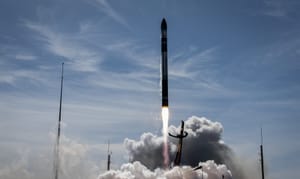
Disclaimer: This article was written on the 29th of September 2023 so some information may be outdated.
This article is intended as a general explanation of the Indian Space Research Organisation, its facilities, and active orbital launch vehicles.
Indian Space Research Organisation
The Indian Space Research Organisation, commonly referred to as ISRO, is responsible for performing India’s space-based activities such as; space exploration, international space cooperation, and space-based operations. The Indian Space Research Organisation was founded on the 15th of August 1969 and has reported to India’s Department of Space since 1972. The agency is currently headquartered in Bangalore, Karnataka in southwestern India. As of 2022, the Indian Space Research Organisation has almost seventeen thousand employees.

Indian Space Research Organisation facilities
The agency has a handful of research facilities throughout India. One of which is the Vikram Sarabhai Space Center in Thiruvananthapuram, in southern India. The Vikram Sarabhai Space Center is the main technical centre and location of the development of the SLV-3, ASLV, and PSLV series of rockets. Another research facility is the Liquid Propulsion System Centre in Thiruvananthapuram and Bengaluru, both in southern India. The Liquid Propulsion System Centre handles the design, development, testing, and implementation of liquid rocket stages and liquid rocket engines for launch vehicles and satellites. The agency also operates the Physical Research Laboratory in Ahmedabad, in western India. The Physical Research Laboratory studies solar planetary physics, infrared astronomy, geo-cosmo physics, plasma physics, astrophysics, archaeology, and hydrology. The National Atmospheric Research Laboratory, located in Tirupati in southern India, carries out research in atmospheric and space sciences. The Space Applications Centre, located in Ahmedabad in western India, is another research facility and looks into practical applications of space technology such as; satellite-based telecommunications, surveying, remote sensing, meteorology, and environment monitoring. The final research facility is the North-Eastern Space Applications Centre, located in Shillong in northeastern India, which provides developmental support to the northeast of India using space-based technology.
The Indian Space Research Organisation operates a testing facility called the ISRO Propulsion Complex, located in Mahendragiri in southern India, to test and assemble liquid rocket engines and liquid rocket stages for launch vehicles and satellites.
The Indian Space Research Organisation also operates a few construction and launch facilities throughout India. One of these is the U R Rao Satellite Center, located in Bengaluru in southern India, and is one of the main satellite technology bases for the agency. The Laboratory for Electro-Optics Systems is also located in Bengaluru and is responsible for the development of altitude sensors for all satellites. Located in Sriharikota, in southern India, is the Satish Dhawan Space Centre. The Satish Dhawan Space Centre is the main launch site for India’s launch vehicles. The other launch facility is the Thumba Equatorial Rocket Launching Station, located in Thiruvananthapuram in southern India, and is used to launch sounding rockets.
Polar Satellite Launch Vehicle – PSLV
The Polar Satellite Launch Vehicle, commonly called PSLV, is one of India’s orbital launch vehicles. PSLV is capable of sending up to 1,750 kilograms to sun-synchronous polar orbit or 1,425 kilograms to near geosynchronous transfer orbit. The rocket uses four stages with up to six boosters to carry its payloads into orbit.
For the first stage, PSLV uses an S139 solid rocket motor burning Hydroxyl-terminated polybutadiene that is augmented by up to 6 solid strap-on boosters. The second stage is powered by a Vikas liquid rocket engine burning Unsymmetrical dimethylhydrazine and Dinitrogen tetroxide. The third stage is powered by an S7 solid rocket motor burning Hydroxyl-terminated polybutadiene. The fourth and final stage is powered by two PS-4 liquid rocket engines burning Monomethylhydrazine and Mixed oxides of nitrogen.

Geosynchronous Satellite Launch Vehicle Mark II – GSLV MK2
The Geosynchronous Satellite Launch Vehicle Mark II, commonly called GLSV MK2, is one of India’s geostationary satellite launch vehicles. GSLV MK2 is capable of sending up to 6,000 kilograms to low Earth orbit or 2,250 kilograms to geosynchronous transfer orbit. The rocket uses three stages to place its payloads into orbit.
For the first stage, GSLV MK2 uses an S139 solid rocket motor burning Hydroxyl-terminated polybutadiene that is augmented by four liquid-fuelled boosters with a Vikas liquid engine on each. The second stage is powered by a Vikas liquid rocket engine burning Unsymmetrical dimethylhydrazine and Dinitrogen tetroxide. The third and final stage is powered by a CE-7.5 engine burning liquid oxygen and liquid hydrogen.

LVM3 (Geosynchronous Satellite Launch Vehicle Mk III)
The LVM3, formally known as Geosynchronous Satellite Launch Vehicle Mk III, is India’s most powerful rocket that has flown. LVM3 is capable of sending 4,000 kilograms to geosynchronous transfer orbit or 8,000 kilograms to low Earth orbit. The rocket uses three stages to place its payloads into orbit.
The first stage uses two S200 solid rocket boosters burning Hydroxyl-terminated polybutadiene to provide the huge amount of thrust required for lift-off. The second stage uses two Vikas liquid rocket engines burning Unsymmetrical dimethylhydrazine and Dinitrogen tetroxide. The third and final stage is powered by the CE-20 liquid-fuel engine burning liquid oxygen and liquid hydrogen.

Small Satellite Launch Vehicle - SSLV
The Small Satellite Launch Vehicle, also called SSLV, is a small-lift launch vehicle operated by ISRO. SSLV can lift up to 500 kilograms to low Earth orbit or 300 kilograms to sun-synchronous orbit.
SSLV consists of four stages to deliver its payloads to space. The first stage is a large solid rocket motor burning Hydroxyl-terminated polybutadiene producing 255 tons of thrust. The second stage is another solid rocket motor bringing Hydroxyl-terminated polybutadiene producing 24 tons of thrust. The third stage is the final solid rocket motor on SSLV and burns Hydroxyl-terminated polybutadiene producing 16 tons of thrust. The fourth and final stage is called the Velocity Trimming Module and is powered by two bipropellant thrusters generating 10 kilograms of thrust burning Monomethylhydrazine and Mixed oxides of nitrogen as a liquid fuel.




